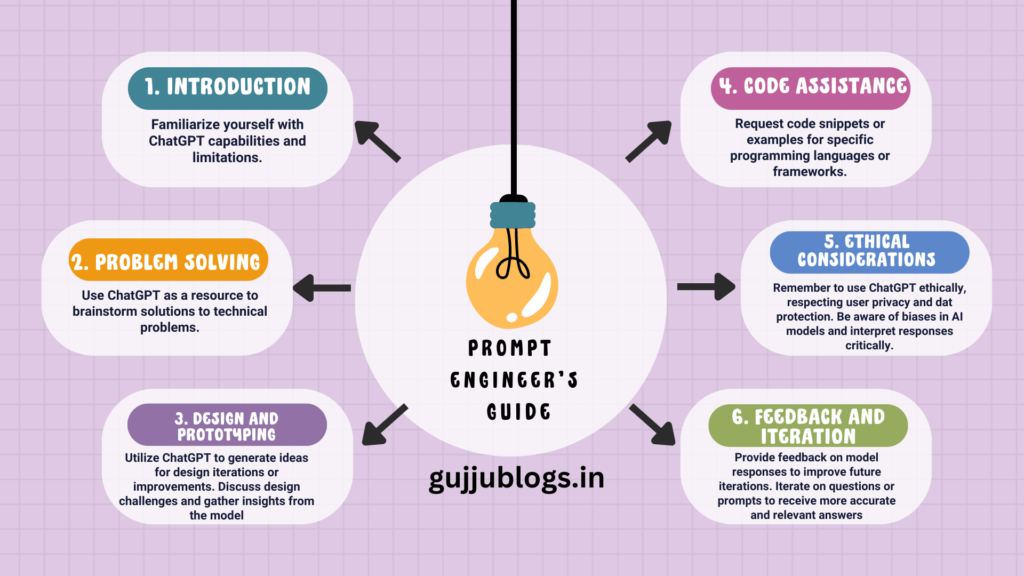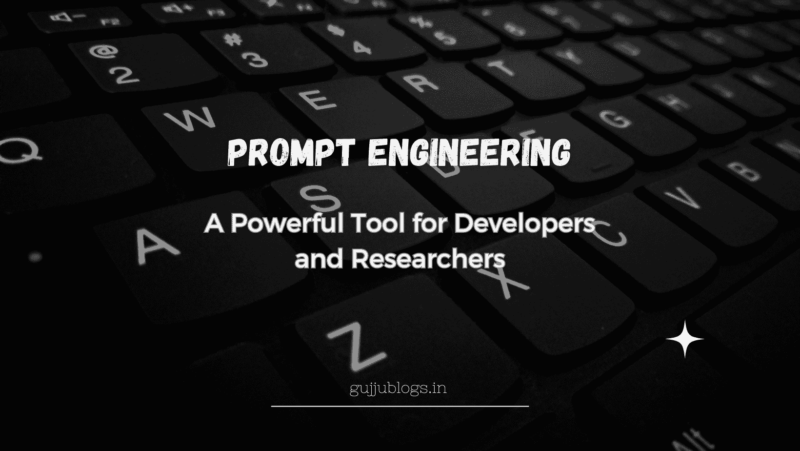Prompt engineering is a technique used to improve the performance of large language models (LLMs) by providing them with more informative and specific prompts. Prompts are instructions that tell the LLM what to do. They can be simple or complex, and they can be written in natural language or code.
Prompt engineering aims to help the LLM understand the task it is being asked to perform and generate more accurate and relevant outputs. For example, if you want an LLM to write a poem about love, you might provide it with a prompt like this:
Examples of Prompt Engineering:
- Chain-of-thought prompting is a technique that helps LLMs to reason through multi-step problems.
- Controlled prompt engineering is a technique that allows you to control the style and tone of the output generated by an LLM.
- Multimodal prompt engineering is a technique that allows you to use both text and images to prompt an LLM.
- A prompt engineer might use a prompt like “Summarize the following text in 50 words” to summarize a text in 50 words. The prompt would tell the LLM that the output should be a summary, and it would also specify the desired length of the summary.
- A prompt engineer might use a prompt like “Translate this text from English to Spanish” to translate a text from English to Spanish. The prompt would tell the LLM that the output should be a translation, and it would also specify the source and target languages.

Benefits of Prompt Engineering:
- Enhancing LLM performance across multiple tasks.
- Increasing accessibility of LLMs to non-experts in AI.
- Promoting responsible and ethical use of LLMs.
Challenges of Prompt Engineering:
- It can be difficult to craft effective prompts.
- The performance of LLMs can vary depending on the prompt that is used.
- There is a risk that prompt engineering could be used to create harmful or misleading content.
Give an overview of an AI Prompt Engineer Job Description
The AI Prompt Engineer plays a critical role in the development and optimization of prompts for AI models. Their main objective is to create prompts that are effective and captivating, eliciting the desired responses from AI systems while ensuring the delivery of high-quality outputs and user satisfaction. Collaborating closely with cross-functional teams comprising data scientists, engineers, and product managers, they gain a deep understanding of user requirements, design suitable prompts, and continuously iterate on them to enhance model performance.
General Responsibilities:

1. Collaborating with product managers, designers, and subject matter experts to comprehend user needs and desired outcomes.
2. Designing and creating prompts that effectively guide AI models to generate relevant, accurate, and engaging responses.
3. Conducting comprehensive analysis and experimentation to optimize prompts and enhance AI model performance.
4. Developing a deep understanding of the AI model’s capabilities, limitations, and behaviour.
5. Cultivating expertise in natural language processing (NLP) and conversational AI to craft prompts that align with user expectations and generate contextually appropriate responses.
6. Collaborating with data scientists and engineers to analyze and preprocess datasets for prompt development. Identifying relevant data sources, curating datasets, and performing data cleaning, transformation, and augmentation as needed.
General Requirements:
1. Preferably holds a bachelor’s or master’s degree in computer science, artificial intelligence, data science, or a related field.
2. Possesses over 10 years of overall experience with at least 5 years of relevant experience in the AI field.
3. Demonstrated experience in developing prompts or similar content for AI models or conversational systems. Familiarity with NLP concepts, conversational AI, and user experience principles.
4. Proficient in programming languages like Python, with experience using NLP libraries and tools such as NLTK, spaCy, TensorFlow, and PyTorch. Understanding of data preprocessing techniques, statistical analysis, and A/B testing methodologies.
5. Strong command of written and spoken language, exhibiting excellent grammar and communication skills. Capable of crafting effective and engaging prompts that resonate with users and generate desired responses.
6. Possesses a creative mindset to develop innovative and engaging prompts that enhance user interactions and drive AI model performance.
What the scope of Prompt Engineering:
Currently, there are various courses available for Prompt Engineers. Large language models like ChatGPT have the potential to revolutionize our lives and businesses when utilized effectively. They can provide tutoring in various subjects, generate personalized meal plans and recipes, develop software applications tailored to our needs, enhance personal cybersecurity, and offer countless other possibilities within just a short timeframe. This course aims to empower individuals to become proficient users of these powerful generative AI tools. By exploring the remarkable capabilities of these tools, participants will learn how to harness their emergent intelligence and reasoning, optimize daily productivity, and gain valuable insights into their functioning.
The scope of prompt engineering encompasses several key areas related to the development and optimization of prompts for artificial intelligence (AI) models.
- Prompt Design
- Prompt Optimization
- Domain Expertise
- Data Preprocessing
- NLP and Conversational AI
- Collaboration and Iteration
The scope of prompt engineering is dynamic and constantly evolving as AI technology advances and new applications and techniques emerge. Effective prompt engineering plays a crucial role in optimizing the performance and user experience of AI systems across various domains and applications.
